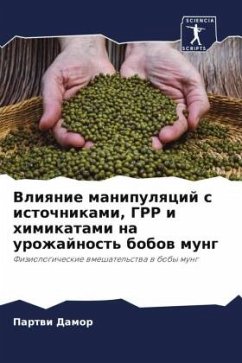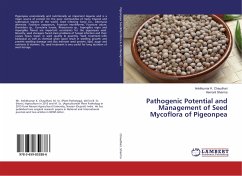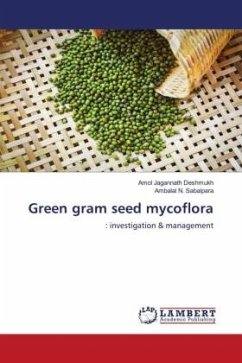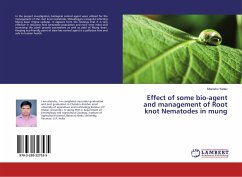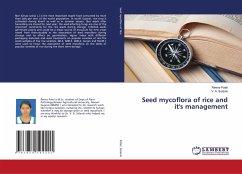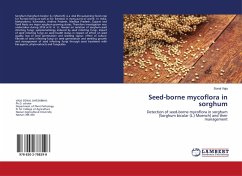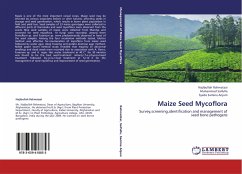
Mycoflora of Mung and Mash Beans and Their Management
Versandkostenfrei!
Versandfertig in 1-2 Wochen
33,99 €
inkl. MwSt.

PAYBACK Punkte
17 °P sammeln!
The present study was carried out to isolate fungi associated with seeds of mung and mash bean by using agar and blotter paper methods. A total of 8 phytopathogenic fungi including, Aspergillus flavus, A. niger, Alternaria alternata, Fusarium solani, F. moniliforme, Fusarium semitectum, Macrophomina phaseolina and Penicillium spp. were identified. The isolated fungi were found to reduce seed germination by 15-20% and seedling mortality by 10-15%. Fusarium semitactum and Macrophomina phaseolina were the most isolated fungi under both in blotter paper and PDA method. All the four fungicides viz....
The present study was carried out to isolate fungi associated with seeds of mung and mash bean by using agar and blotter paper methods. A total of 8 phytopathogenic fungi including, Aspergillus flavus, A. niger, Alternaria alternata, Fusarium solani, F. moniliforme, Fusarium semitectum, Macrophomina phaseolina and Penicillium spp. were identified. The isolated fungi were found to reduce seed germination by 15-20% and seedling mortality by 10-15%. Fusarium semitactum and Macrophomina phaseolina were the most isolated fungi under both in blotter paper and PDA method. All the four fungicides viz., Benlate, Diethene M-45, Captan and Copper oxychloride almost have the same effect on fungal control. However, promising effect of Captan has been observed to be against seed-borne mycoflora of both mung and mash bean. Among the plant extracts neem extract has bean observed effective.



